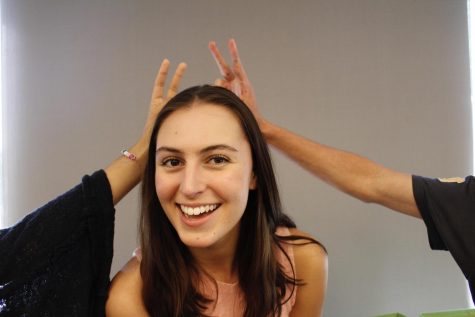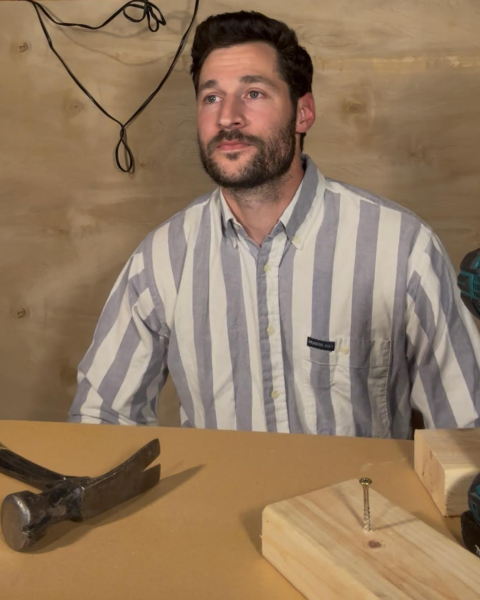Young Men of Color Symposium
Parker Hosts First Annual Conference
Despite it being 9:00 am on a Saturday, Parker’s lobby was buzzing. 120 young boys from fifth through twelfth grade were scattered throughout the front hall. Some of them donned white shirts that read, “Name, Define, Create & Speak.” Others came in wearing Patagonias.
On Saturday November 3, young boys, teenagers, and volunteers took part in the Young Men of Color Symposium, hosted at Parker. The symposium was open for “young self-identified men of color, who attend independent schools in the Chicago area,” according to the Parker website.
Over 120 students from different independent schools and volunteers were in attendance, with 16 independent schools represented. In addition to nearby institutions like Latin School of Chicago and Chicago Laboratory School, students from The Blake School flew 600 miles from Minneapolis to attend.
Inspiration sparked after Upper School Head Justin Brandon and Middle and Upper School Director of Studies Sven Carlsson attended a similar symposium last fall, hosted at Riverdale Country School in New York City.
Riverdale’s Director of Hill Campus Community Engagement and Middle School and Upper School English teacher Dwight Vidale started the symposium ten years ago. The first Young Men of Color Symposium had 11 student participants, 10 from Riverdale and one from a nearby school.
When speaking about the purpose of the day, Vidale described, “Through various workshops, we challenge the young men to interrogate both their racial marginalization and their gender identity privilege.”
Brandon remembers leaving the symposium in New York with ideas. “After we experienced it, we said, ‘this is definitely something we should have at Parker,’” Brandon said. Soon after, he reached out to Vidale and suggested they recreate one in Chicago. Later that spring, Vidale flew to Parker and met with Carlsson, members of the Men of Color Heritage Affinity group (MOCHA), and Athletic Director Bobby Starks.
Author and Robin Hood’s Chief Executive Officer Wes Moore kicked off the symposium in the Heller Auditorium. Moore forwent a podium or slideshow and instead addressed his audience with raw authenticity. To start off, he asked a simple question: “Why are you here?”
Like many of the young men at this conference, Moore was enrolled at a predominately white, independent middle school in the Bronx. There, “I found myself trying to be a chameleon trying to fit in every where I was,” Moore said. “But if I was never honest with who I was, I was never going to fit in anywhere.”
By attending his middle school, Moore didn’t feel accepted anywhere. “I didn’t feel like my school fully understood or embraced me because I was different,” Moore said, “and my community didn’t fully embrace me because I wasn’t going to school with everyone else.”
As Moore walked around on stage, he matched with most of the audience as he wore his “Name, Define, Create & Speak” long sleeve over his button down. He told the crowd never to be apologetic about who they were.
As he finished, he asked the crowd to, “take [your power], use that, and go out there and live a really interesting life.”
After the presentation, students were split up by grade to meet in “group sessions.” These sessions were led by volunteer facilitators. All facilitators had to take part in a combined six hours of training prior to the program. Members of faculty, such as P.E. teacher Terry Davis, Health teacher Dr. Gary Childrey, and eighth grade math teacher Kam Woodard were some of the many Parker faces. In these hour long group sessions, students talked about “what it’s like to be them at their school and community.”
Brandon wanted to provide a space where students could converse. “Part of my hope for the day was to provide a space for young men of color just to talk and to be,” Brandon said. “Just to be heard and be seen.”
In room 185, 18 fifth through seventh graders were asked to think of words they thought coincided with “man.” As they shared, their words were written on a whiteboard. By the end, the board was covered with characteristics, including “son,” “muscle,” “mature,” and “facial hair.”
They were then asked to add characteristics if the category was changed to “man of color.” New additions included “not respected” and “stereotypes.” A ten year old wearing a Compton hat contributed, “oppressed, with an ‘o!’”
Brandon was pleasantly surprised about the ease of the dialogue. Despite the discussion facilitators being equipped with long scripts, they rarely had to use them. “Vindale told us if you just start with one question you’ll be amazed to see what happens,” Brandon said, “and how students will take ownership of the experience and really get into it––and that’s what happened.”
During the symposium, Childrey helped lead the ninth and tenth grade discussion as well as and the mixed race affinity group session. “To have all these different students come in with all these different stories,” Childrey said, “feeling a bond, saying, ‘I’m not alone’ was very powerful. I wish I had it as a kid.”
Vidale remembers his past experience when thinking of the inspiration of the symposium. “I often wished, as a student, there was space to converse with other students of color about the experiences I had in and out of the classroom,” Vidale said. “When I returned as a faculty member, I wanted to provide a space for young men to share and be vulnerable about who they are becoming and how their experiences shape them.”
Now, the symposium in New York holds 250+ participants.
Vidale saw differences in the Parker symposium. “It involved more parental support,” Vidale said. “Many of the facilitators are Parker parents, whereas the facilitators in NYC are educators from a variety of schools.”
In the preparation leading up to the symposium, Vidale visited MOCHA to try out an exercise that later appeared in the symposium. MOCHA Head Chad White liked how the discussions didn’t narrowly focus on men of color. “I was really happy that they touched about questions like ‘how do we support our female counterparts?’” White said. “Not just, ‘let’s focus on ourselves,’ but ‘let’s also talk about other people, and how our relationship with them is impacted because we are a man of color.’”
The discussions, according to White included how to support interactions with “white students, along with women and the LGBTQ community, and everyone in general.”
White will be taking his experience at the symposium with him. “The theme of representation and knowing that you aren’t alone, knowing that it’s not just you,” White said, “is something that I want to incorporate in MOCHA.”
White looks into the future of MOCHA after the symposium. “[I want to make] it feel like MOCHA is a place that you might need,” White said, “instead of a place where you stop by and get food.”
Laboratory School eighth grader Kenneth Peters benefited from being around people who shared the same obstacles as him. “It’s crazy to realize how there can be so many people that have the same experiences as me,” Peters said. “It was interesting to see how we have problems with the same things but we’ve never met each other before.”
Peters was not the only person to appreciate these common threads. Brandon was “amazed” to witness “all the dialogue, connections and the common stories and common shared experiences.”
Looking into the future, Childrey wants to recognize women of color’s needs as well. “I think it’s important for men of color to get together,” Childrey said, “but there’s also a population of women of color too, who I think we really have to address their needs as well.”
As the five hour symposium closed in the auditorium, students were able to stand up and share what they had experienced during the symposium. Brandon said, “Hearing so many students speak up and talk about what the day meant for them, just made it well worth it.”







